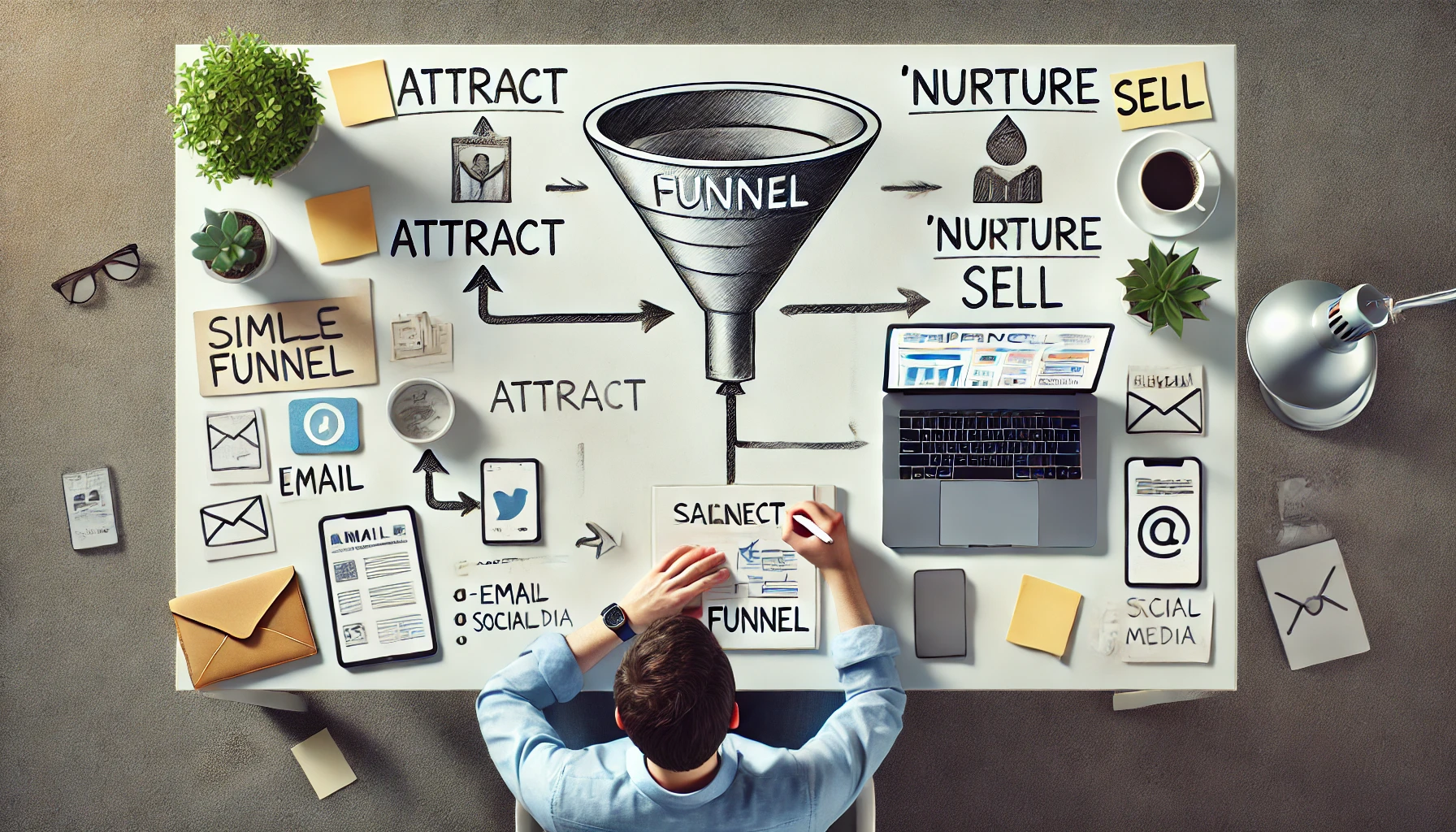You’ve got a great product or service. You’re posting online, building your brand, and trying to attract customers. But something’s missing — people are interested, but not buying.
That’s where a sales funnel comes in.
A sales funnel is the path people take from discovering your business to making a purchase. And the good news? You don’t need complicated tools or a marketing team to set up a basic funnel that works.
Let’s build one step by step.
What Is a Sales Funnel?
Think of a funnel in three parts:
- Top of Funnel (TOFU): Attract people who don’t know you yet
- Middle of Funnel (MOFU): Build trust and educate them
- Bottom of Funnel (BOFU): Convert them into paying customers
Each step gently moves your audience closer to saying “yes” to your offer.
Step 1: Create Awareness (Top of Funnel)
Your first job is to get in front of people who need what you offer — even if they don’t know it yet.
Where to do it:
- Social media (Instagram, TikTok, LinkedIn, etc.)
- SEO (blog posts or YouTube videos)
- Online communities (Facebook Groups, Reddit)
- Collaborations with other creators or brands
What to share:
- Tips, tutorials, or value posts
- Personal stories or behind-the-scenes
- Entertaining or relatable content
- Content that solves a small problem for free
Goal: Make people stop scrolling and say, “This is for me.”
Step 2: Capture Interest and Leads (Middle of Funnel)
Once someone knows you exist, the next step is to build a connection — and collect their contact info if possible.
How to do it:
- Offer a freebie (lead magnet) in exchange for their email
- Use a landing page with a clear promise (e.g. “Free checklist for new entrepreneurs”)
- Invite them to follow you, DM you, or reply to your stories
- Host a live session or challenge to build deeper connection
Great tools for this step:
- MailerLite, ConvertKit, or Brevo (email marketing)
- Canva to design your freebie
- Carrd or Systeme.io for simple landing pages
Goal: Get them into your world — your email list, your DMs, your ecosystem.
Step 3: Nurture With Value and Trust
This is where most beginners stop — but it’s where the magic happens.
You’ve captured their attention. Now you nurture the relationship with:
- Emails that educate, inspire, and build trust
- Stories that show results, experiences, or personality
- Tips that solve mini problems
- Behind-the-scenes or real-time updates
Think: you’re helping them believe your offer is the solution they need — without pressure.
Simple email sequence structure:
- Welcome + what to expect
- Value email (tip, resource, story)
- Testimonial or social proof
- Offer + how it helps
- Reminder or bonus
Step 4: Make the Offer (Bottom of Funnel)
Now that they trust you, invite them to buy.
How to do it:
- Send a clear sales email (or post)
- Add a CTA (call to action) in your content
- Offer a limited-time bonus or discount
- Answer objections in your messaging
- Make it super easy to buy (one link, simple checkout)
Tools that help:
- Payment links (Stripe, PayPal, Gumroad)
- WhatsApp Business or Instagram DMs
- Link-in-bio tools like Stan Store or Linktree
Don’t be afraid to repeat your offer — people need to see it multiple times before they act.
Step 5: Follow Up After the Sale
The funnel doesn’t stop after the sale.
Happy customers = more sales, referrals, and trust.
After someone buys:
- Thank them personally
- Send a follow-up email with next steps or bonus content
- Ask for feedback or a review
- Offer something else (next-level product or referral bonus)
Turn buyers into repeat customers or brand advocates.
A Simple Sales Funnel Example:
Let’s say you’re a virtual assistant offering admin support.
Top of Funnel: You post tips on Instagram about time-saving tools.
Middle of Funnel: You offer a free “Productivity Toolkit” in exchange for email.
Nurture: You send 3–5 emails with helpful tips + client success stories.
Bottom of Funnel: You offer a discounted 1-hour trial session.
After Sale: You follow up with a thank-you, a testimonial request, and offer monthly packages.
Simple, effective, and repeatable.
Final Tip: Start Small, Then Optimize
You don’t need a fancy funnel with 10 steps. Start with:
- One platform
- One freebie
- One offer
- One email sequence
Test it. Improve it. Grow from there.
Sales funnels aren’t about being salesy — they’re about guiding people to the right solution, at the right time.
Next, I’ll generate a realistic image to match this article — and then we’ll move into Article 30: How to Use Testimonials to Build Trust and Drive Sales. Let’s go!
